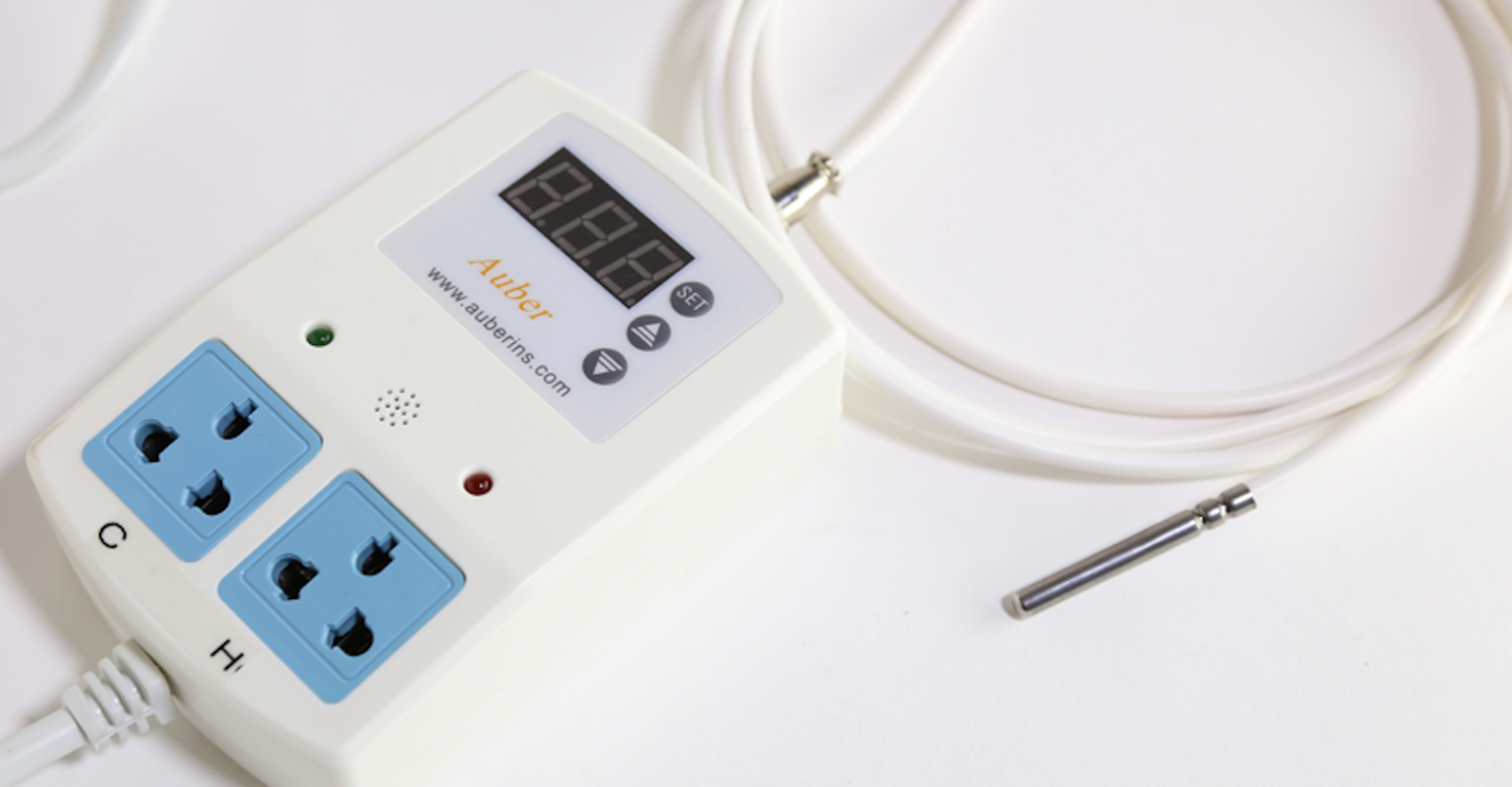Good temperature control is one of the main technologies that separates professional brewers and homebrewers. While the pros have access to jacketed cylindroconicals that can hold fermentation within a very narrow temperature window, most hobbyists improvise some kind of controlled, insulated environment. And the brain of that environment is the temperature controller.
A temperature controller is a glorified on/off switch with a sensor. Plug the controller into the wall, plug a refrigerator or freezer into the controller, and place the temperature sensor within said refrigerator or freezer. Then just set the temperature you want, and let the controller power the cold box on and off to maintain it. It’s a convenient way to override the internal thermostat.
Here are a few things to consider when buying a temperature controller.
Digital or analog?
The simplest, and typically least expensive, controllers are analog. These are a great choice if you need only refrigeration and if you don’t require utmost precision. Analog models usually feature a wider deadband or differential than digital controllers. For instance, let’s say you use a controller with a deadband of 3°F (2°C) and ask it to maintain 60°F (16°C). The controller will kick on when the temperature exceeds 60°F (16°C) and will continue to cool until it reaches 57°F (14°C), 3°F (2°C) lower. At that point, it turns off and remains inactive (dead) until the sensed temperature free rises back to 60°F (16°C). Digital controllers can have deadbands of 1°F (0.5°C) or less.
Single or dual stage?
A single stage controller controls one heating or cooling element. A dual stage controller controls two. This means that you could have a carboy wrapped in a heating element inside your chest freezer. Why might you want to do this? Let’s say you live in a desert climate with wild temperature swings and that your chest freezer is in an uninsulated garage. You want to maintain your lager at 50°F (10°C). If the temperature in the garage drops to freezing at night and then soars up to 75°F (24°C) during the day, you may need to engage both heating and cooling functions to stay within the specified range.
Single-temperature or programmable?
A single-temperature controller is easy to use. Just specify the temperature you want and let it go. If, however, you want to add in some automation, a programmable controller may be the way to go. Let’s say you want to start fermentation at one temperature and gradually ramp it up over a period of days to ensure full attenuation, followed by a cold crash to drop yeast out of suspension. With a single-temperature controller, you’ll need to manually change the dial to execute each phase. A programmable model, however, allows you to specify temperature as a function of time for hands-free convenience. Some even let you download the output of the temperature probe so that you can evaluate how the actual temperature tracked your specified profile.
The quality and variety of temperature controllers have improved dramatically in the past few years. And as prices have dropped accordingly, the barrier to good temperature control has become less of a problem. A temperature controller is an investment in the quality of your homebrew, and after you’ve worked with one, you’ll wonder how you brewed without it.

